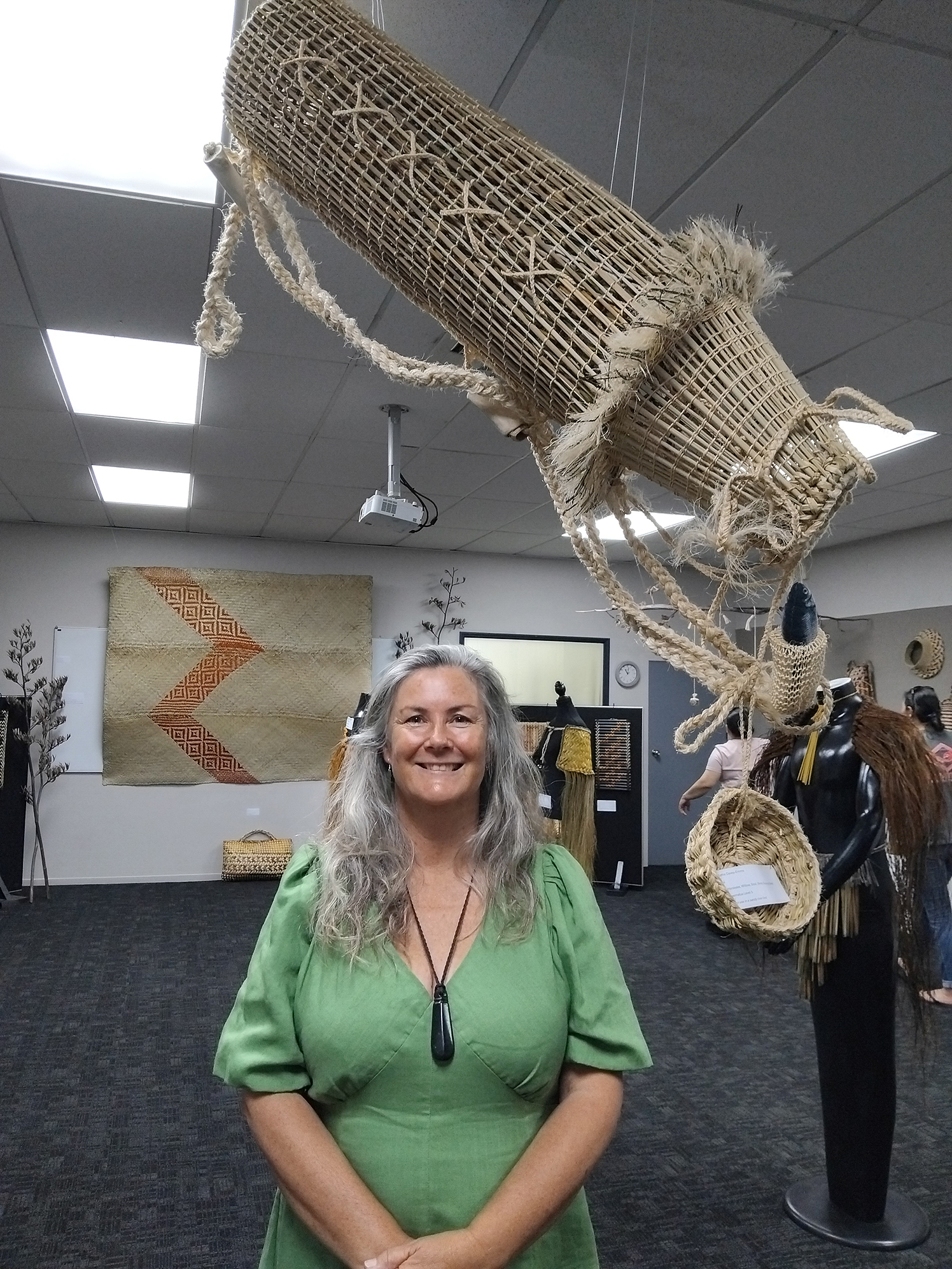Raranga students showcase skill and spirit in exhibition

In suspension: Kōpū, a hīnaki by Kathe Davey-Emms. Photos Kathy Forsyth E5744-02
Kathy Forsyth
A striking array of raranga (weaving) is on display at the Te Wānanga o Aotearoa toi tuira (student) exhibition in Whakatāne.
Level 4 and 5 raranga students opened their end-of-year show yesterday, with the exhibition running until Friday.
Tutor Lisa McKendry said 15 students were exhibiting their work across the Kawai Raupapa Level 4 Certificate and the Toi Paematua Level 5 Diploma.
“Level 4 is about building foundational weaving skills, while Level 5 expands those with more difficult weaving, and you can see the development in the exhibition,” she said.
Visitors can expect a wide range of pieces – pikau, kete, whāriki, poi, pōtai, tukutuku and contemporary works – there is even a piece accompanied by QR code offering insight into the artist and their process.
“The whole exhibition shows creativity and innovation,” said Ms McKendry.
Level 5 student Keita Kingi has kete, tukutuku and a striking piece incorporating a clay ukutangi (traditional whistle) on display.
“I have made kete muka, which are woven from natural fibres taken from the harakeke leaf. You strip away the green outer layer to expose the fibres, which are much more pliable to work with,” she said.

One of her kete is naturally dyed using bark from the mānono tree.
Kingi said she had “loved the course” and the opportunity to deepen her practice.
Fellow Level 5 student Kathe Davey-Emms also praised the programme and their tutor.
Davey-Emms has contributed a diverse collection, including a lampshade series and an impressive suspended hīnaki (eel trap) titled Kōpū. Crafted from willow, sisal, bone, hara-keke and coconut shell, the piece combines traditional influence with locally sourced materials.
“Because I live next to the river, I researched how hīnaki were traditionally made using what was available nearby. I explored willow vine and morning glory vine but eventually returned to harakeke.”
She said the hoop structure was formed from willow, using a weave she learned from the Whanganui area. The hīnaki is fully functional, and she hopes to test it in the river.
For some artists, the work carries deep emotional meaning.
Davey-Emms created a kete for a young friend who recently lost a mother to cancer; the handles symbolising the friend’s parents, both of whom had passed.
“I think when you are weaving, it is the most healing thing you can do,” she said.
The exhibition is open daily until Friday and is filled with original and thoughtfully crafted works.
